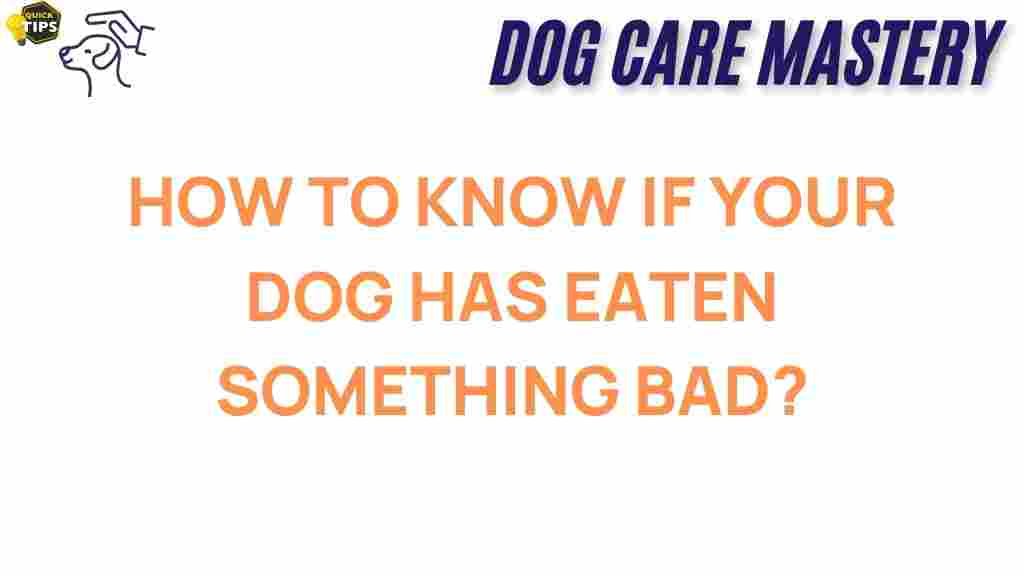Dog Health: Unraveling the Mystery of Ingested Harmful Substances
As a dog owner, ensuring your furry friend’s health and well-being is a top priority. One of the most alarming situations you may face is discovering that your dog has ingested something harmful. Whether it’s a toxic plant, human food, or household chemicals, knowing how to detect potential hazards is crucial for your dog’s health. This article aims to guide you through the signs and symptoms of harmful ingestion, how to respond, and tips on preventing such incidents in the future.
Understanding the Risks
Many household items can pose serious threats to your dog’s health. Common culprits include:
- Foods: Chocolate, grapes, onions, and certain nuts can be toxic.
- Plants: Lilies, azaleas, and sago palms are highly dangerous.
- Household chemicals: Cleaning products, antifreeze, and certain medications.
- Foreign objects: Small toys, bones, or string can cause blockages.
Signs of Ingestion
Recognizing the signs that your dog might have ingested something harmful can be life-saving. Here are key symptoms to watch for:
- Vomiting: Frequent or severe vomiting can indicate poisoning.
- Diarrhea: Loose stools may signal gastrointestinal distress.
- Lethargy: Unusual tiredness or lack of energy can be a red flag.
- Excessive salivation: Drooling may occur as a reaction to toxic substances.
- Abdominal pain: Signs like whining, pacing, or reluctance to move can indicate discomfort.
- Changes in appetite: A sudden loss of interest in food or water can be concerning.
- Seizures: Neurological symptoms can indicate serious poisoning.
Step-by-Step Process to Verify Ingestion
If you suspect your dog has ingested something harmful, follow these steps to assess the situation:
Step 1: Stay Calm
Your dog can sense your stress, which may heighten their anxiety. Take a deep breath and proceed methodically.
Step 2: Identify the Substance
If possible, determine what your dog has ingested. Check for:
- Food wrappers
- Plant leaves or flowers
- Any chewed items or foreign objects
Knowing the substance will help you communicate effectively with a veterinarian.
Step 3: Observe Your Dog
Monitor your dog for any of the signs mentioned earlier. Take note of the symptoms and their severity.
Step 4: Contact Your Veterinarian
Do not wait for symptoms to worsen. Contact your veterinarian immediately, and provide them with:
- Your dog’s age, breed, and weight
- A description of the substance ingested
- The time of ingestion
- Any symptoms you have observed
Step 5: Follow Professional Guidance
Your vet may instruct you to bring your dog in for an examination or provide at-home care. Follow their advice carefully to ensure your dog’s safety.
What to Do Until Help Arrives
While waiting for veterinary assistance, there are some steps you can take:
- Do not induce vomiting unless instructed: Some substances can cause more harm if vomited.
- Keep your dog calm: Create a quiet space to reduce anxiety.
- Monitor vital signs: Check for breathing and pulse. If your dog is unresponsive, start CPR.
Troubleshooting Tips for Prevention
Prevention is always better than cure. Here are some tips to help you safeguard your dog’s health:
- Secure Hazardous Items: Store cleaning products, medications, and harmful foods out of reach.
- Identify Toxic Plants: Educate yourself about plants that are toxic to dogs.
- Be Cautious with Food: Never feed your dog human food without checking for toxicity.
- Regular Vet Check-ups: Keep your dog’s health in check with routine veterinary visits.
- Use Pet-proof Containers: Invest in containers that are dog-proof for food and trash.
Emergency Resources
In case of emergencies, it’s essential to have resources at hand:
- Pet Poison Helpline: Visit their website for immediate guidance.
- Your Veterinarian’s Contact Info: Keep this readily available in case of emergencies.
- Local Emergency Vet Clinics: Know your nearest emergency clinic for after-hours care.
Conclusion
Understanding your dog’s health and being vigilant about what they can ingest is fundamental for any pet owner. By recognizing the signs of harmful ingestion and knowing how to respond, you can significantly improve your dog’s chances of a swift recovery. Always remember that prevention is key. By taking proactive steps to safeguard your dog’s environment, you can help ensure their health and happiness for years to come.
If you want to learn more about maintaining your dog’s overall health, don’t hesitate to check out our other articles on dog health and wellness.
This article is in the category Health and created by dogcaremastery Team
